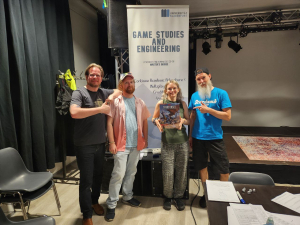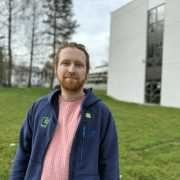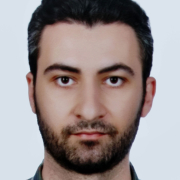Kseniia and Tom participated in the annual symposium CHI PLAY (Computer-Human Interaction in Play) from October 14–17/online.
They both took part in the doctoral consortium, where they presented their works and built connections with fellow doctoral students and experienced researchers in the field.
Kseniia presented her topic, “Developing a Virtual-Reality Game for Empathy Enhancement and Perspective-Taking in the Context of Forced Migration Experiences”, and Tom presented his topic, “Enhancing Empathy Through Personalized AI-Driven Experiences and Conversations with Digital Humans in Video Games”.
Proceedings are published under Companion Proceedings of the Annual Symposium on Computer-Human Interaction in Play (CHI PLAY Companion ’24), October 14–17, 2024, Tampere, Finland.
Kseniia participated in the annual FROG conference from 11 to 13 October, which had the topic of “Gaming the Apocalypse”. Her talk, “Unraveling the Romanticization of Colonial, Imperial and Authoritarian Narratives in Modern Video Games”, showcased a trend in video games to cutefy serious topics like historical power dynamics through aesthetics, and explained the potential issues caused by this phenomenon.
Her talk can be seen on YouTube (https://www.youtube.com/watch?v=37-sqVJrMoY), and proceedings will follow in the summer of 2025.
On October 3rd, 2024, Hermann’s retirement was celebrated with a special event. During the celebration, the Governor of Carinthia presented him with the Grand Decoration of Honour from the State of Carinthia. In his farewell lecture, Hermann reflected on important topics from his 30-year career, many of which went beyond informatics. He spoke about issues that are relevant to all stages of working life. The lecture was titled “30 Years as an Informatics Professor: Insights and Outlooks.” Many colleagues and friends shared their experiences working with Hermann and wished him well in retirement. Prof. Erich Schwarz moderated the event.
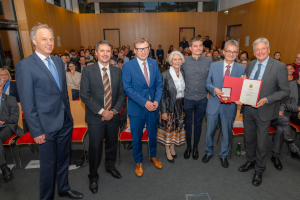
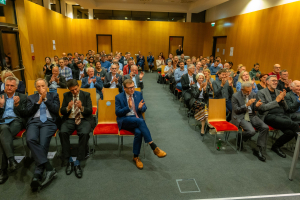
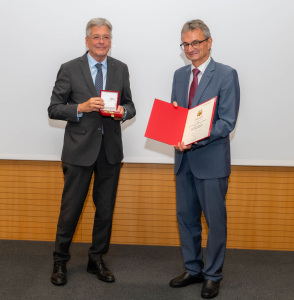
From 11 to 13 October, ITEC’s Felix Schniz participated in the annual FROG (Future and Reality of Gaming) conference in Vienna. It is Austria’s biggest, (video) game dedicated academic conference, which attracted 50 speakers from 12 countries this year. Under this year’s topic of “Gaming the Apocalypse”, Felix delivered the talk “Scales of Apocalypse: Space and Affect in Dystopian Video Games between Sacred and Profane”.
Also presenting at the conference were AAU’s Kseniia Harshina and the Game Studies and Engineering master students Tim Sanders and Elli Chraibi, showcasing the diverse research interest and academic expertise produced by Game Studies and Engineering staff and students in the field.
The conference proceedings are expected to be published next year Summer.
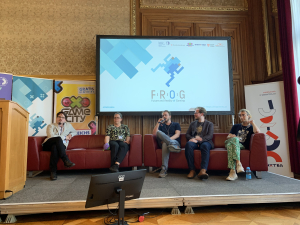
Dr. Reza Farahani (University of Klagenfurt, Austria) and Dr. Vignesh V Menon (Fraunhofer HHI, Germany) presented a joint tutorial titled ‘Latency- and Energy-Aware Video Coding and Delivery Streaming Systems’ at the 12th European Workshop on Visual Information Processing (EUVIP 2024) on September 8.
Abstract: This tutorial introduces modern performance and energy-aware video coding and content delivery solutions and tools, focusing on popular video streaming applications, i.e., VoD and live streaming. In this regard, after introducing fundamentals of modern video encoding and networking paradigms, we introduce modern solutions systems, using per-title encoding, per-scene encoding, virtualized and software networks, edge computing, overlay networks such as Content Delivery Networks (CDNs) and/or Peer-to-Peer (P2P) paradigms to provide latency and energy-efficient VoD and live HAS streaming. Furthermore, the tutorial also presents our tools, software, datasets, and testbeds to demonstrate our latest achievements and share practical insights for researchers, engineers, and students who want to improve conversational streaming or even test such techniques for immersive video sequences (e.g., tile-based 360-degree VR) with a focus on latency, economic cost, and energy.
CERCIRAS (CA19135), short for Connecting Education and Research Communities for an Innovative Resource Aware Society is a 4-year long COST Action, started at the end of September 2020 and now nearing completion. One of the highlights of CERCIRAS has been its yearly Training School, a week-long residential school designed for current and future PhD students with research interests falling within the thematic scope of the Action and open to other profiles, including industry professionals. While perturbed by unfortunate overlap with the outbreak of the COVID pandemic, CERCIRAS managed to execute three consecutive Training Schools successfully: mid-September 2022 in Split (HR); early September 2023 in Riga (LV); and late August 2024 in Klagenfurt (AT). All editions of the CERCIRAS Training School follow a common structure: 4 selected lecture topics, which alternate frontal lessons and assisted hands-on works; 25 to 35 participants from as many participating countries as possible, with rich diversity for provenance, seniority level, and research focus; a rich portfolio of social activities.
The Training School places a considerable burden on the local hosts, which includes securing comfortable and affordable accommodation for a large troop, providing a modern and spacious lecture hall for all lectures and labs, with refreshments for the two daily breaks and nearby canteens for lunch, and arranging exciting options for a whole-afternoon diversion.
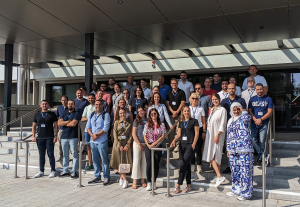
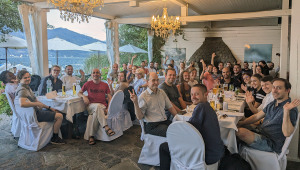
Published in: From Multimedia Communication to the Future Internet: Essays Dedicated to the Retirement of Prof. Dr. Dr. h.c. Ralf Steinmetz
Authors: Amr Rizk (Leibniz Universität Hannover, Germany), Hermann Hellwagner (AAU, Austria), Christian Timmerer (AAU, Austria), and Michael Zink (University of Massachusetts Amherst, MA, USA)
Abstract: Adaptivity is a cornerstone concept in video streaming. Equipped with the concept of Transitions, we review in this paper adaptivity mechanisms known from classical video streaming scenarios. We specifically highlight how these mechanisms emerge in a specific context, such that their performance finally depends on the deployment conditions. Using multiple examples we highlight the strength of the concept of adaptivity at runtime for video streaming.
Authors: Mohammad Ghasempour (AAU, Austria), Hadi Amirpour (AAU, Austria), and Christian Timmerer (AAU, Austria)
Abstract: Video streaming has become an integral part of our digital lives, driving the need for efficient video delivery. With the growing demand for seamless video delivery, adaptive video streaming has emerged as a solution to support users with varying device capabilities and network conditions. Traditional adaptive streaming relies on a predetermined set of bitrate-resolution pairs, known as bitrate ladders, for encoding. However, this “one-size-fits-all” approach is suboptimal when dealing with diverse video content. Consequently, per-title encoding approaches dynamically select the bitrate ladder for each content. However, in an era when carbon dioxide emissions have become a paramount concern, it is crucial to consider energy consumption. Therefore, this paper addresses the pressing issue of increasing energy consumption in video streaming by introducing a novel approach, ESTR, which goes beyond traditional quality-centric resolution selection approaches. Instead, the ESTR considers both video quality and decoding energy consumption to construct an optimal bitrate ladder tailored to the unique characteristics of each video content. To accomplish this, ESTR encodes each video content using a range of spatial and temporal resolutions, each paired with specific bitrates. It then establishes a maximum acceptable quality drop threshold (τ), carefully selecting resolutions that not only preserve video quality above this threshold but also minimize decoding energy consumption. Our experimental results, at a fixed τ of 2 VMAF steps, demonstrate a 32.87% to 41.86% reduction in decoding energy demand for HEVC-encoded videos across various software decoder implementations and operating systems, with a maximum bitrate increase of 2.52%. Furthermore, on a hardware-accelerated client device, a 46.37% energy saving was achieved during video playback at the expense of a 2.52% bitrate increase. Remarkably, these gains in energy efficiency are achieved while maintaining consistent video quality.

The Christian Doppler (CD) Laboratory ATHENA was established in October 2019 to tackle current and future research and deployment challenges of HTTP Adaptive Streaming (HAS) and emerging streaming methods. The goal of CD laboratories is to conduct application-oriented basic research, promote collaboration between universities and companies, and facilitate technology transfer. They are funded through a public-private partnership between companies and the Christian Doppler Research Association, which is funded by the Ministry for Digital and Economic Affairs and the National Foundation for Research, Technology, and Development (Nationalstiftung für Forschung, Technologie und Entwicklung (FTE)). ATHENA is supported by Bitmovin as a company partner.
The CD laboratories have a duration of seven years and undergo rigorous scientific review after two and five years. This spring, the CD lab ATHENA completed its 5-year evaluation, and we have just received official notification from the CDG that we have successfully passed the review. Consequently, it is time to briefly outline the main achievements during this second phase (i.e., years 2 to 5) of the CD lab ATHENA.
Before exploring the achievements, it’s important to highlight the ongoing relevance of research in video streaming, given its dominance in today’s Internet usage. The January 2024 Sandvine Internet Phenomena report revealed that video streaming accounts for 68% of fixed/wired Internet traffic and 64% for mobile Internet traffic. Specifically, Video on Demand (VoD) represents 54% of fixed/wired and 57% of mobile traffic, while live streaming contributes to 14% of fixed/wired and 7% of mobile traffic. The major services in this domain include YouTube and Netflix, each commanding more than 10% of the overall Internet traffic, with TikTok, Amazon Prime, and Disney+ also playing significant roles.
ATHENA is structured into four work packages, each with distinct objectives as detailed below:
- Content provisioning: Primarily involves video encoding for HAS, quality-aware encoding, learning-based encoding, and multi-codec HAS.
- Content delivery: Addresses HAS issues by utilizing edge computing, exchanging information between CDN/SDN and clients, providing network assistance for clients, and evaluating corresponding utilities.
- Content consumption: Focuses on bitrate adaptation schemes, playback improvements, context and user awareness, and studies on Quality of Experience (QoE).
- End-to-end aspects: Offers a comprehensive view of application and transport layer enhancements, Quality of Experience (QoE) models, low-latency HAS, and learning-based HAS.
During the 2nd phase of ATHENA’s work, we achieved significant results, including publications in respected academic journals and conferences. Specifically, our publications were featured in key multimedia, signal processing, computer networks & wireless communication, and computing systems venues, as categorized by Google Scholar under engineering and computer science. Some of the notable publications include IEEE Communications Surveys & Tutorials (impact factor: 35.6), IEEE Transactions on Image Processing (10.6), IEEE Internet of Things Journal (10.6), IEEE Transactions on Circuits and Systems for Video Technology (8.4), and IEEE Transactions on Multimedia (7.3).
Furthermore, we focused on technology transfer by submitting 16 invention disclosures, resulting in 13 patent applications (including provisionals). Collaborating with our company partner, we obtained 6 granted patents. Additionally, we’re pleased to report on the progress of our spin-off projects, as well as the funding secured for two FFG-funded projects named APOLLO and GAIA, and an EU Horizon Europe-funded innovation action called SPIRIT.
The ATHENA team was also active in organizing scientific events such as workshops, special sessions, and special issues at IEEE ICME, ACM MM, ACM MMSys, ACM CoNEXT, IEEE ICIP, PCS, and IEEE Network. We also contributed to reproducibility in research through open source tools (e.g., Video Complexity Analyzer and LLL-CAdViSE) and datasets (e.g., Video Complexity Dataset and Multi-Codec Ultra High Definition 8K MPEG-DASH Dataset) among others.
We also note our contributions to the applications of AI in video coding & streaming, for example in video coding and video streaming as follows:
- Fast Multi-Rate Encoding with Machine Learning (using Convolutional Neural Networks (CNNs))
- LiDeR: Lightweight video Super Resolution for mobile devices (using Deep Neural Networks (DNNs))
- Blind Visual Quality Assessment Using Vision Transformers
- Video Complexity Analysis (VCA) and optimizations for per-title encoding (using Linear Regression, Random Forest, and XGBoost models)
- DeepStream: Video streaming enhancements using compressed deep neural networks (using Deep Neural Networks (DNNs))
- ECAS-ML: Edge-assisted adaptive bitrate switching (using Long Short-Term Memory (LSTM))
- Quality Optimization of Live Streaming Services over HTTP with Reinforcement Learning (RL)
A major outcome of the second phase is the successful defense of the inaugural cohort of PhD students:
- Dr. Alireza Erfanian: “Optimizing QoE and Latency of Video Streaming using Edge Computing and In-Network Intelligence”, May 25, 2023
- Dr. Ekrem Çetinkaya: “Video Coding Enhancements for HTTP Adaptive Streaming using Machine Learning”, June 7, 2023
- Dr. Minh Nguyen: “Policy-driven Dynamic HTTP Adaptive Streaming Player Environment”, June 30, 2023
- Dr. Jesús Aguilar Armijo: “Multi-access Edge Computing for Adaptive Video Streaming”, July 10, 2023
- Dr. Reza Farahani: “Network-Assisted Delivery of Adaptive Video Streaming Services through CDN, SDN, and MEC”, August 22, 2023
- Dr. Vignesh V Menon: “Content-adaptive Video Coding for HTTP Adaptive Streaming”, January 15, 2024
- Dr. Babak Taraghi, “End-to-end Quality of Experience Evaluation for HTTP Adaptive Streaming”, July 10, 2024
Two postdoctoral scholars have reached a significant milestone on their path toward habilitation
- Dr. Hadi Amirpour, “Video Coding for Efficient HTTP Adaptive Streaming”, February 8, 2024
- Dr. Farzad Tashtarian, “How to Optimize Dynamic Adaptive Video Streaming? Challenges and Solutions”, February 27, 2023 & “End-to-End Adaptive Video Streaming Optimization”, June 26, 2024
During the second phase, each work package produced excellent publications in their domain, briefly highlighted in the following. Content provisioning (WP-1) focuses mainly on video coding for HAS (43 papers) and immersive media coding for streaming (4 papers). The former can be further subdivided into the following topic areas:
- Video complexity: spatial and temporal feature extraction (4 papers)
- Compression efficiency improvement of individual representations (1 paper)
- Encoding parameter prediction for HAS (9 papers)
- Efficient bitrate ladder construction (4 papers)
- Fast multi-rate encoding (3 papers)
- Data security and data hiding (7 papers)
- Energy-efficient video encoding for HAS (4 papers)
- Advancing video quality evaluation (7 papers)
- Datasets (4 papers)
Content delivery (WP-2) dealt with SDN/CDN assistance for HAS, edge computing support for HAS, and network-embedded media streaming support, resulting in 21 papers. Content consumption (WP-3) worked on QoE enhancement mechanisms at client-side and QoE- and energy-aware content consumption (11 papers). Finally, end-to-end Aspects (WP-4) produced 15 papers in the area of end-to-end QoE improvement in multimedia video streaming. We reported 94 papers published/accepted for the ATHENA 5-year evaluation.
In this context, it is also important to highlight the collaboration within ATHENA, which has resulted in joint publications across various work packages (WPs) and with other ITEC members. For example, collaborations with Prof. Schöffmann (FWF-funded project OVID), FFG-funded projects APOLLO/GAIA, and EU-funded project SPIRIT. In addition, we would like to acknowledge our international collaborators, such as Prof. Hongjie He from Southwest Jiaotong University, Prof. Patrick Le Callet from the University of Nantes, Prof. Wassim Hamidouche from the Technology Innovation Institute (UAE), Dr. Sergey Gorinsky from IMDEA, Dr. Abdelhak Bentaleb from Concordia University, Dr. Raimund Schatz from AIT, and Prof. Pablo Cesar from CWI. We are also pleased to report the successful technology transfers to Bitmovin, particularly CAdViSE (WP-4) and WISH ABR (WP-3). Regular “Fun with ATHENA” meetups and Break-out Groups are utilized for in-depth discussions about innovations and potential technology transfers.
Over the next two years, the ATHENA project will prioritize the development of deep neural network/AI-based image and video coding within the context of HAS. This includes energy- and cost-aware video coding for HAS, immersive video coding such as volumetric video and holography, as well as Quality of Experience (QoE) and energy-aware content consumption for HAS (including energy-efficient, AI-based live video streaming) and generative AI for HAS.
Thanks to all current and former ATHENA team members: Samira Afzal, Hadi Amirpour, Jesús Aguilar Armijo, Emanuele Artioli, Christian Bauer, Alexis Boniface, Ekrem Çetinkaya, Reza Ebrahimi, Alireza Erfanian, Reza Farahani, Mohammad Ghanbari (late), Milad Ghanbari, Mohammad Ghasempour, Selina Zoë Haack, Hermann Hellwagner, Manuel Hoi, Andreas Kogler, Gregor Lammer, Armin Lachini, David Langmeier, Sandro Linder, Daniele Lorenzi, Vignesh V Menon, Minh Nguyen, Engin Orhan, Lingfeng Qu, Jameson Steiner, Nina Stiller, Babak Taraghi, Farzad Tashtarian, Yuan Yuan, and Yiying Wei. Finally, thanks to ITEC support staff Martina Steinbacher, Nina Stiller, Margit Letter, Marion Taschwer, and Rudolf Messner.
We also would like to thank the Christian Doppler Research Association for continuous support, organizing the review, and the reviewer for constructive feedback!
On Friday, July 5 2024, Tom Tuček and Felix Schniz visited the Kwadrat youth centre in Klagenfurt for a workshop on computer role-playing games. Together with a group of highly motivated youngsters (and Kwadrat staff members!), they analysed the opening sequence of the best-selling game Baldur’s Gate 3 together. Afterwards, they introduced the audience to the pen-and-paper roots of modern role-playing games and invited everybody tomjoin a session of the classic Dungeons and Dragons, wonderfully hosted by Tom.
The workshop was well visited and received. Further events to introduce the Klagenfurt youth to the wonders of computer game design are already in the planning.
